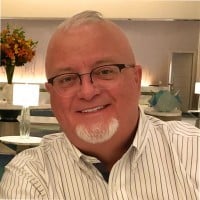Mergers and acquisitions, or M&A as it’s commonly known, is a growing trend in the security marketplace as reported by several industry reports. The convergence of technology is one of the driving reasons for this, according to various M&A trends reports (e.g. Deloitte), and the momentum includes both smaller strategic deals as well as major transformational deals.
Regardless of size, the challenges of merging two company cultures can range from differences of opinion or management style to communication issues. Shifts in management practices and strategies can affect daily business activities as well as having negative implications on the workforce. In other areas, combining operational activities such as fleet management or technologies such as access control can also prove to be challenging.
The latter challenge of merging operational technologies comes with a number of issues. First, one or both of the organizations may have numerous diverse systems such as payroll, access control, HR, key control and more that rely on some of the same data and information. For example, when a new employee comes on board, he or she must be added to all of these systems, which is often done with complicated, time-consuming and error-prone manual processes. It becomes even more difficult when a person leaves and an organization must remove him or her from all systems and ensure the individual has returned any keys or other items that enable access to a building or areas within them. Merging the two organizations brings all of these issues into play.
The move toward open architecture in various operational security technologies has significantly helped in addressing these issues and making the transition easier. The concept of open architecture enables the integration of best of breed solutions, including both logical and physical security, with one user interface, which greatly streamlines operations.
Today’s key control solutions feature such open protocols to allow the system to be networked and integrated with other security technologies, eliminate redundancies across common points. When two companies are merged, employee information from the key control system can be entered into the access control system, for example, with credentials, profile information, access group, etc. instantly transferred to other systems. The system can also pass data about transactions and alarms back to the access control system for greater integration.
A centralized access control platform also allows management to more quickly locate staff or equipment in the event of an emergency situation, including facility visitors. Separate facilities can also be included on a single platform for more efficient control. In effect, a centralized system enables greater flexibility to add security components needed in the various buildings, keeping the cost of expenditures lower and requiring little additional training.
The tamper-proof key control systems are designed so that only authorized users, using pre-programmed PIN codes, access cards or biometrics, can access keys; on-board advanced technology automatically records all access activity. As well, a sophisticated interface can allow users to quickly and efficiently configure several user authorization parameters including add/modify/delete cardholders and badge data; associate key control site profiles to access system levels; configure which key control system alarms and transactions that get passed to the access control system via alarms; allow the configuration of an anti-egress feature, to name just a few.
Mergers and acquisitions continues to be a strategy for industry growth and the open architecture platforms of advanced security technologies such as key management systems will help ease the challenges.



